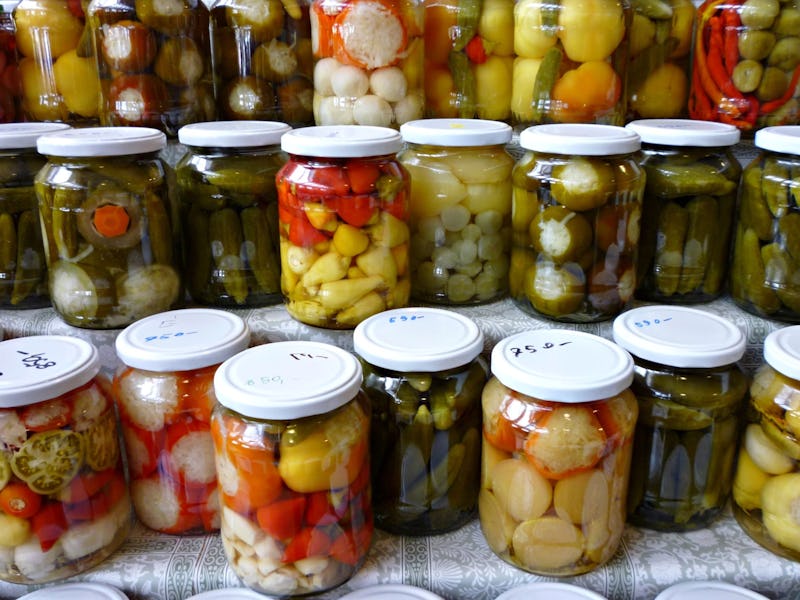Reminder: The Delicious Food You Love Is Basically Bacteria and Yeast Poop
The secret ingredient isn’t love -- it’s microorganisms.

You’re probably pretty careful to keep mold and bacteria away from the food you eat, and promptly throw out anything that becomes contaminated. We make huge efforts to avoid rotten food, but also, paradoxically, huge efforts to consume it. In fact, a surprising amount of the foods we eat rely on pre-digestion by bacteria and yeast to make them less perishable, more nutritious, and tastier — we just call it fermentation.
It’s not just for yogurt and kombucha — fermentation is key to way more of the foods you eat than you probably realize. It’s high time that bacteria and yeast earned proper recognition for their role in the production of deliciousness.
Bread
Rising bread with yeast is a kind of fermentation. The yeast breaks down sugar in the dough into ethanol and carbon dioxide. It’s the CO2 that causes the dough to fill with pockets of air, allowing for a light and fluffy loaf.
Nothing beats the smell of fresh baked bread.
Surprisingly, added yeast isn’t even a necessary ingredient in bread. If you mix flour and water, yeast and bacteria that are already present in the flour and in the air will start to work on the mixture, and over time it will start to ferment. This natural fermentation results in what we call sourdough.
The yeast is not only responsible for the bread’s texture — it actually makes more of the nutrition in the flour digestible to our bodies. It’s part of the reason that wet flour is pretty unappetizing but bread is the most common food source on the planet.
Chocolate
You wouldn’t recognize a cocoa bean to try one straight off a cacao tree. The beans come in pods filled with a strange white pulp. When put into large piles, the pulpy seed mixture will ferment over a number of days, and through this process develop its dark chocolate color and distinct flavor. After this, the beans are dried and roasted. No fermentation, no chocolate.
You can thank microorganisms for your chocolate addiction.
The human chocolate addiction began 4,000 years ago in Mexico, and has only picked up steam since then. These days the world consumes seven million tons of cocoa annually. That is a lot of delicious rot.
Beer
Beer is obviously a product of fermentation — yeast breaks down the sugars from grain to produce ethanol. It’s the same process as leavening bread, except with bread the goal is to capture and trap the carbon dioxide, whereas with beer it’s really the alcohol that’s the goal (although the carbon dioxide allows for that delightful fizz.) So next time you enjoy a pint of that local microbrew you love so much, be sure to thank a microorganism.
Delicious beer.
Cheese
In what is perhaps the most definitive evidence that bacteria poop is the most delicious thing, I give you cheese. Cheese is in essence sour, moldy milk — and also the best culinary invention of ever. The amazing variety of cheeses that exist is a tribute to the diversity of the molds and bacteria that make it possible.
Cheese, glorious cheese.
Wine
Wine, of course, isn’t just sour grape juice. Yeast is a crucial ingredient, although it always seems to be the grapes that get all the credit. Some winemakers isolate strains of yeast so that the reaction can be controlled, and the flavor of the wine will be consistent. Purists, though, insist that only the yeasts that occur naturally in the region where a particular grape is grown should be used to make wine. This is part of the explanation for regional variation in wine flavor. Cheers to that.
Thank God (or yeast) for red wine.